What is planet Earth’s cosmic address? If someone from a planet in a distant galaxy wanted to send us a parcel via intergalactic post - presuming such a service existed - what address would they need to write?
On Earth we tend to write house or flat number, street name, village, town or city, followed by county or state and country. We might even go so far as including our continent, if necessary.
But what about writing this local address on a cosmic scale? What are the constituent regions of our place in the grand cosmos?
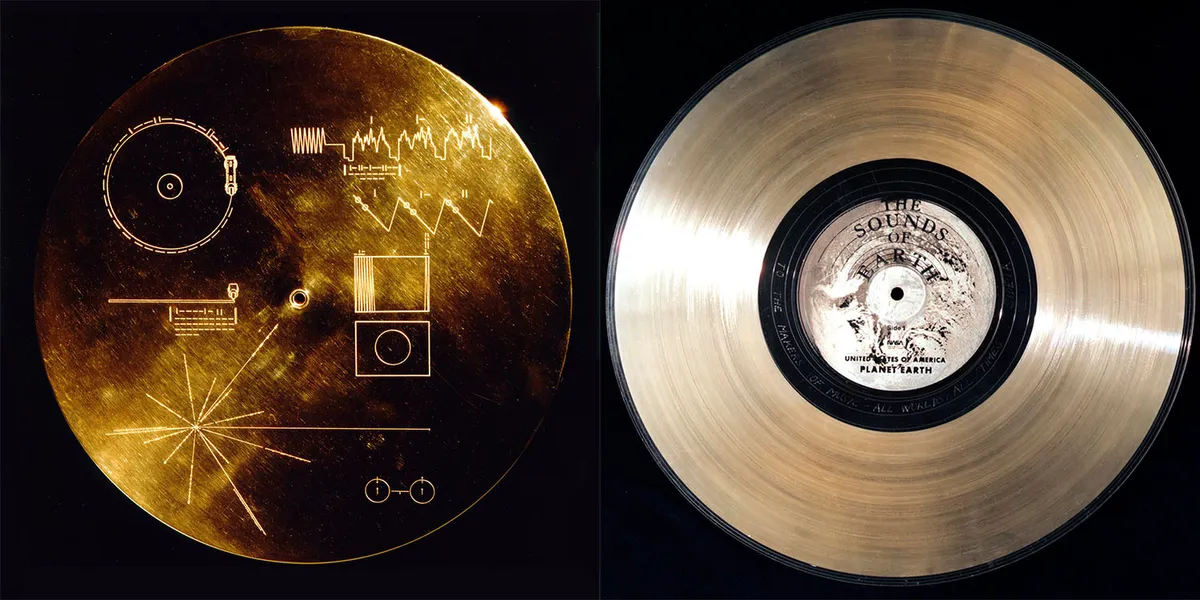
Let's take the cosmic address of BBC Sky at Night Magazine, and then delve into exactly what this means.
Our cosmic address would be: BBC Sky at Night Magazine, Eagle House, Bristol, BS1 4ST, United Kingdom, Planet Earth, Solar System, Oort Cloud, Local Interstellar Cloud, Local Cavity, Orion Arm, Milky Way, Local Group, Virgo Supercluster, Laniakea Supercluster, the Universe.
Of course it’s challenging to provide an accurate address, though, since it will depend on our own frame of reference of the Universe, which could be very different for the person sending the parcel.
As well as this, in the time it takes for your distant penpal's letter to be delivered, everything in the Universe will have moved.
But what does this cosmic address actually mean? Well, it's all to do with the our categorisation of the wider cosmos on grander and grander scales, and where our tiny home planet fits in to the bigger picture.
Understanding the Cosmic Address
Planet Earth
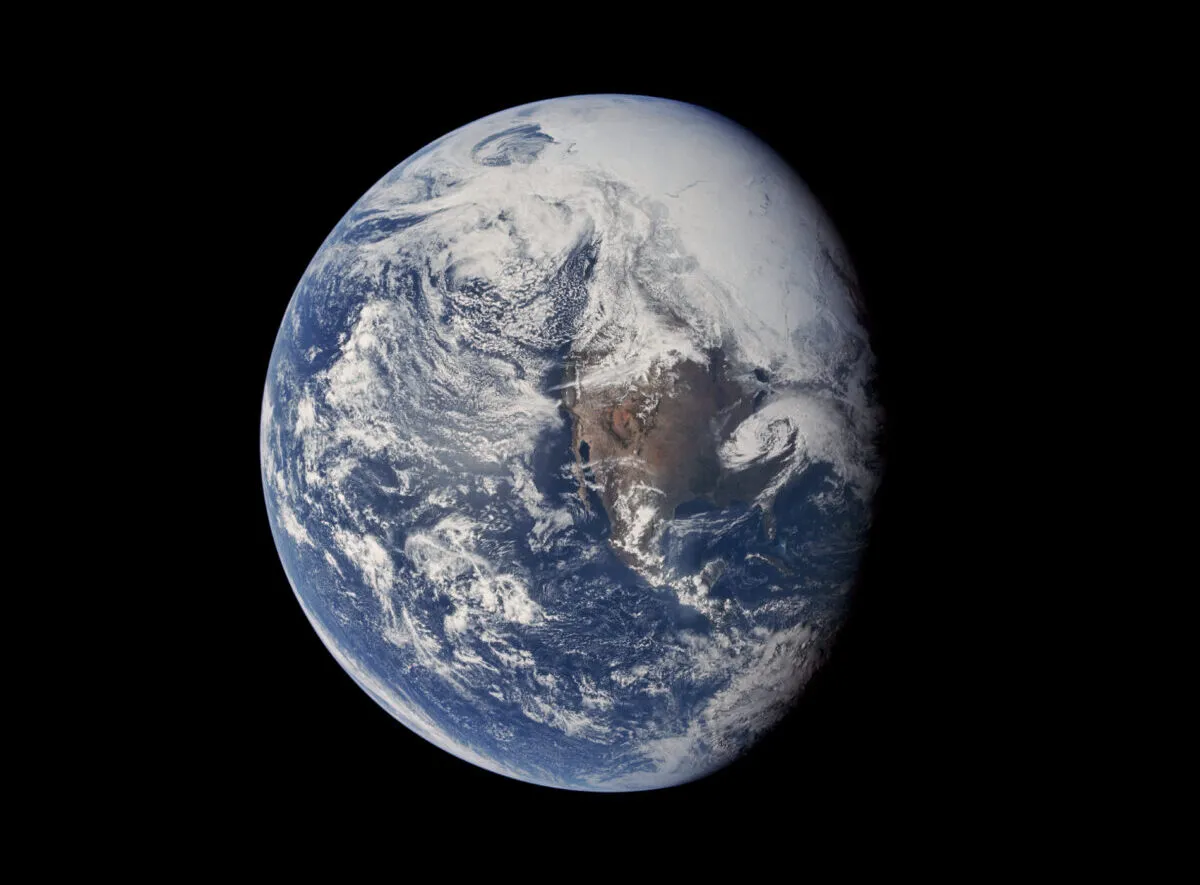
This one should be easy enough! Planet Earth is the planet in the Solar System on which we live. Of the 8 planets orbiting our host star - which we call the Sun - Earth is the 3rd, located between Venus and Mars.
Solar System
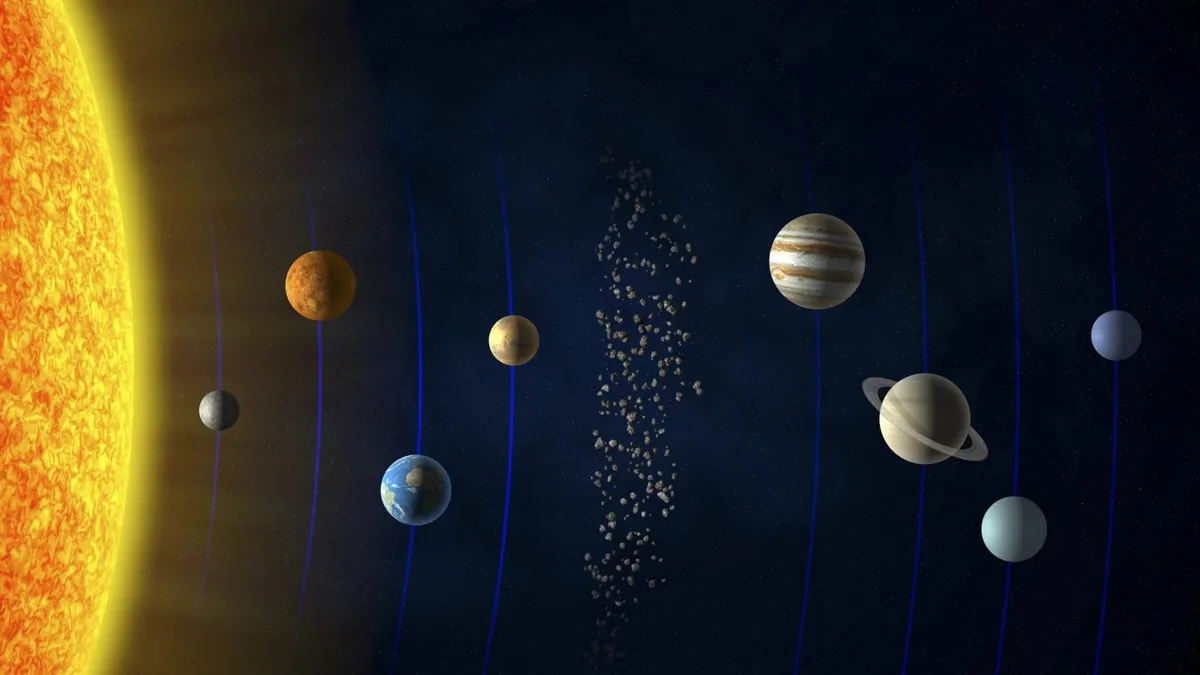
Earth is one of 8 planets of the Solar System. The planets of the Solar System in order of distance from the Sun are Mercury, Venus, Earth, Mars, Jupiter, Saturn, Uranus, Neptune.
Each planet is stuck in a cyclical motion around the Sun as a result of the Sun's gravitational pull. This is known as a planet's orbit.
Oort Cloud
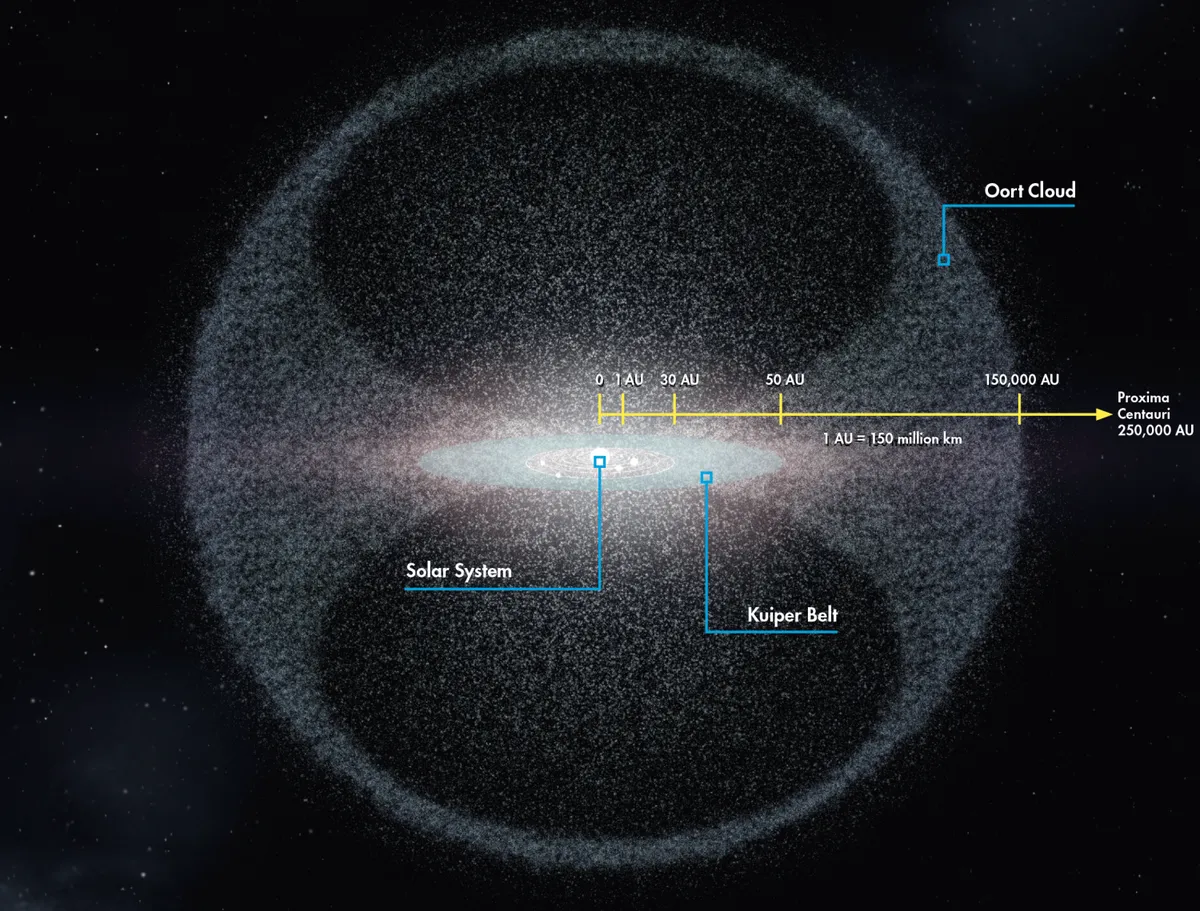
This is where things get trickier. The Oort Cloud is a vast region of billions - or perhaps even trillions - of icy bodies making up a shell that surrounds the entire Solar System.
Of course, a ghostly shell of such cosmic proportions has never actually been observed, but it's named after Jan Oort, the Dutch astronomer who suggested it could exist in 1950.
Some estimates suggest the Oort Cloud begins about 1 lightyear's distance from the Sun and could reach a third of the way to Proxima Centauri, the closest star beyond our Solar System.
Local Interstellar Cloud
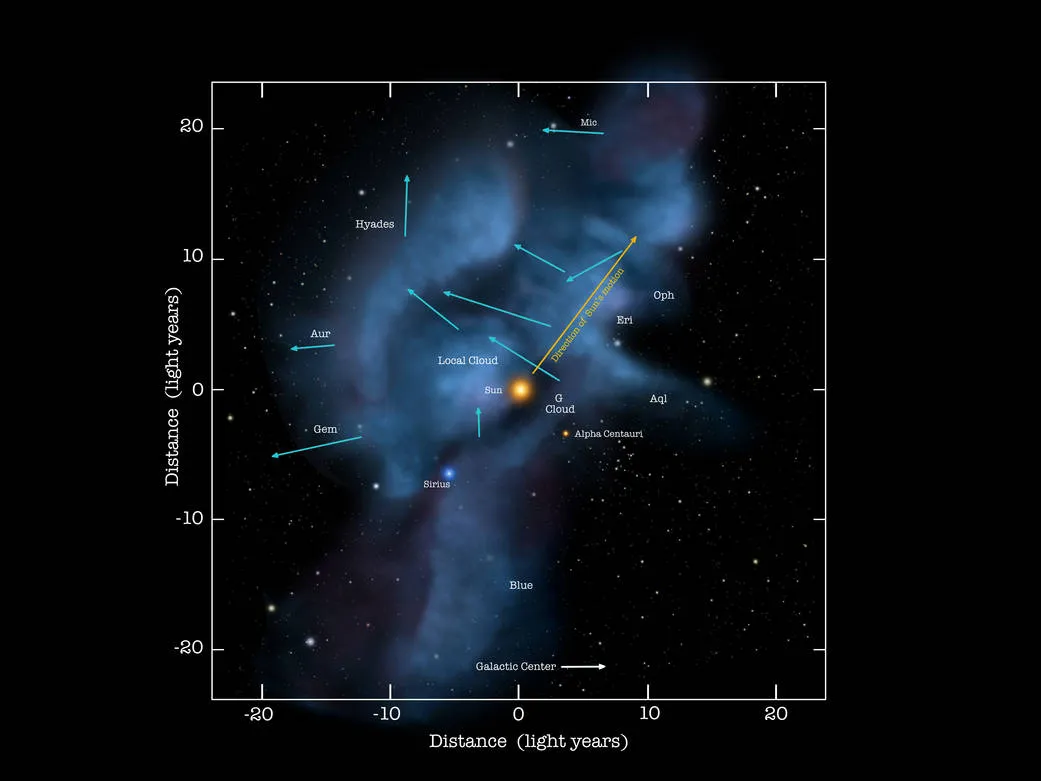
Our home planet Earth is thought to be in or just on the border of the Local Interstellar Cloud (LIC) – a 30 lightyear-wide region that may have been formed by exploding stars known as supernovae, and which the Solar System has been traversing for around 40,000 years.
Local Cavity
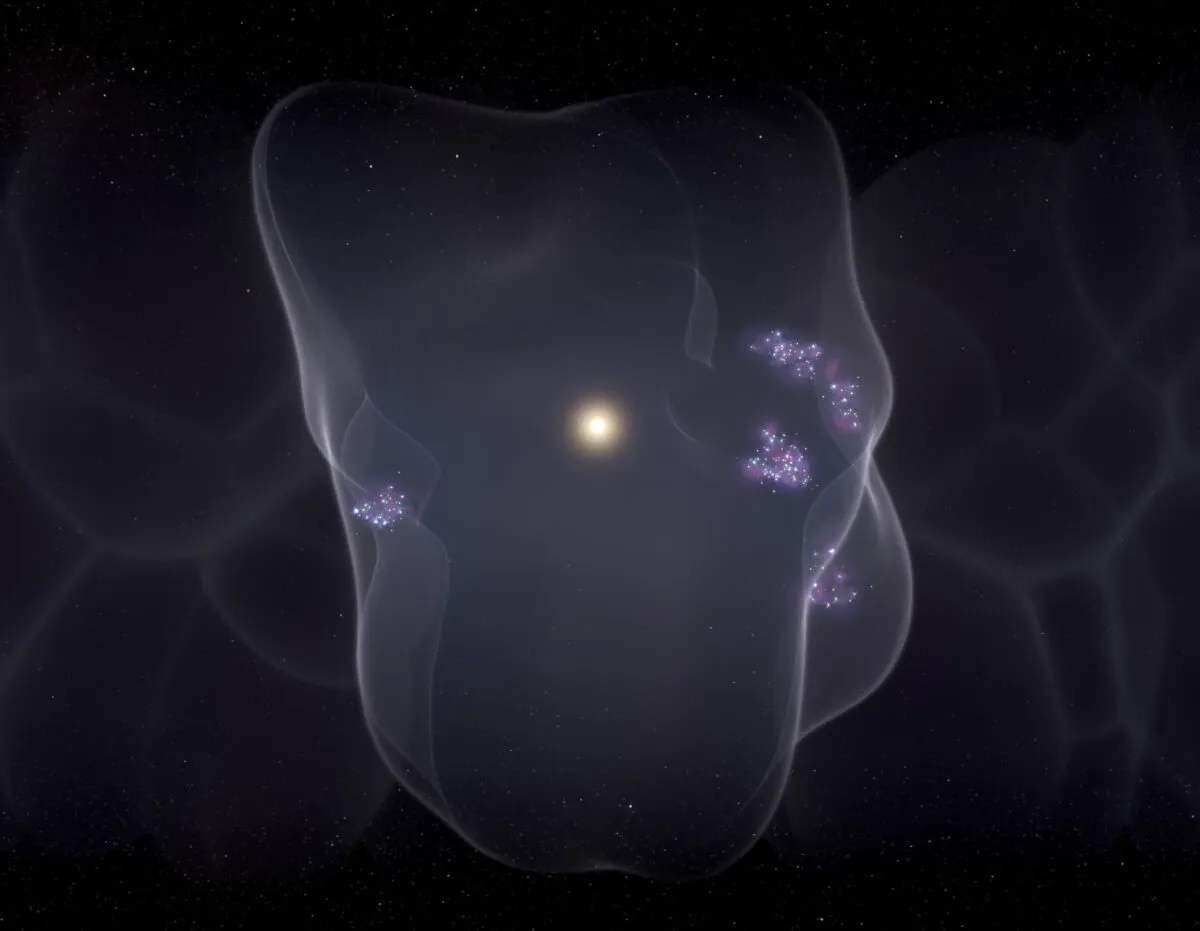
Outer space may seem like an empty vacuum, but this is not the case.
The interstellar medium the name given to all the matter and other 'stuff' that fills the space between stars.
Within this interstellar medium are thought to be 'cavities', or regions of low-density gas, perhaps carved out by supernovae or the solar winds emanating from young stars.
Our Local Cavity - or Local Bubble - is thought to be about 1,000 lightyears wide and resides in the Orion Arm of the Milky Way.
Orion Arm
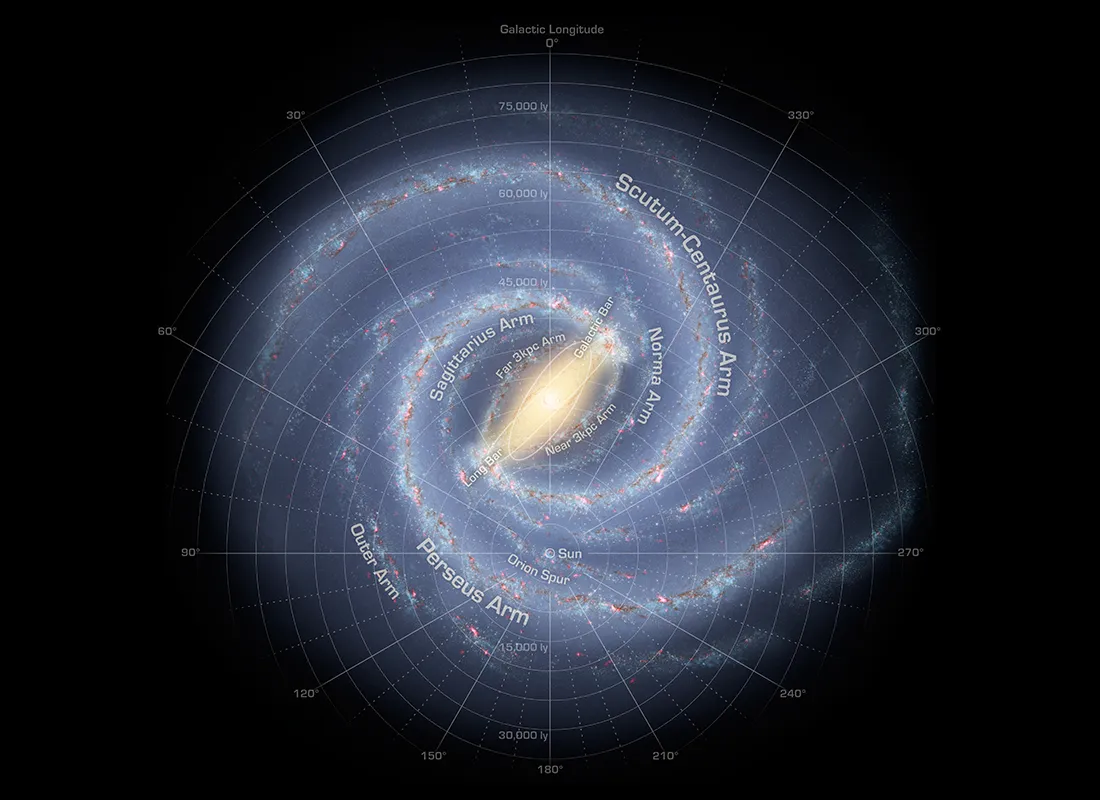
Our home galaxy, the Milky Way, is a spiral galaxy just like those beautiful pictures of the Whirlpool Galaxy or the Pinwheel Galaxy we're used to seeing in images captured by the Hubble Space Telescope and other observatories.
Our Local Cavity resides in the so-called Orion Arm of the Milky Way galaxy, which is thought to be about 3,500 lightyears wide.
Milky Way
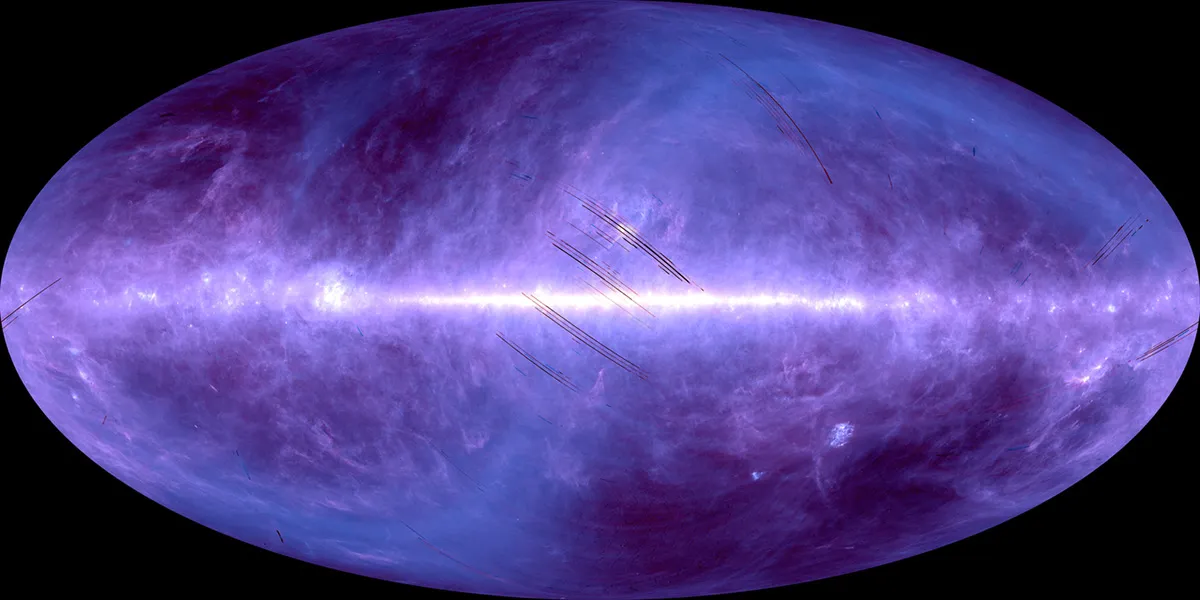
Our home galaxy is the Milky Way, a barred spiral galaxy over 13 billion years old, stretching about 100,000 lightyears across.
On a dark night it is possible to see the Milky Way as a band of densely-packed stars stretching across the sky.
Our nearest major galactic neighbour is the Andromeda Galaxy, which is a fellow member of a cluster of galaxies called the Local Group.
Local Group
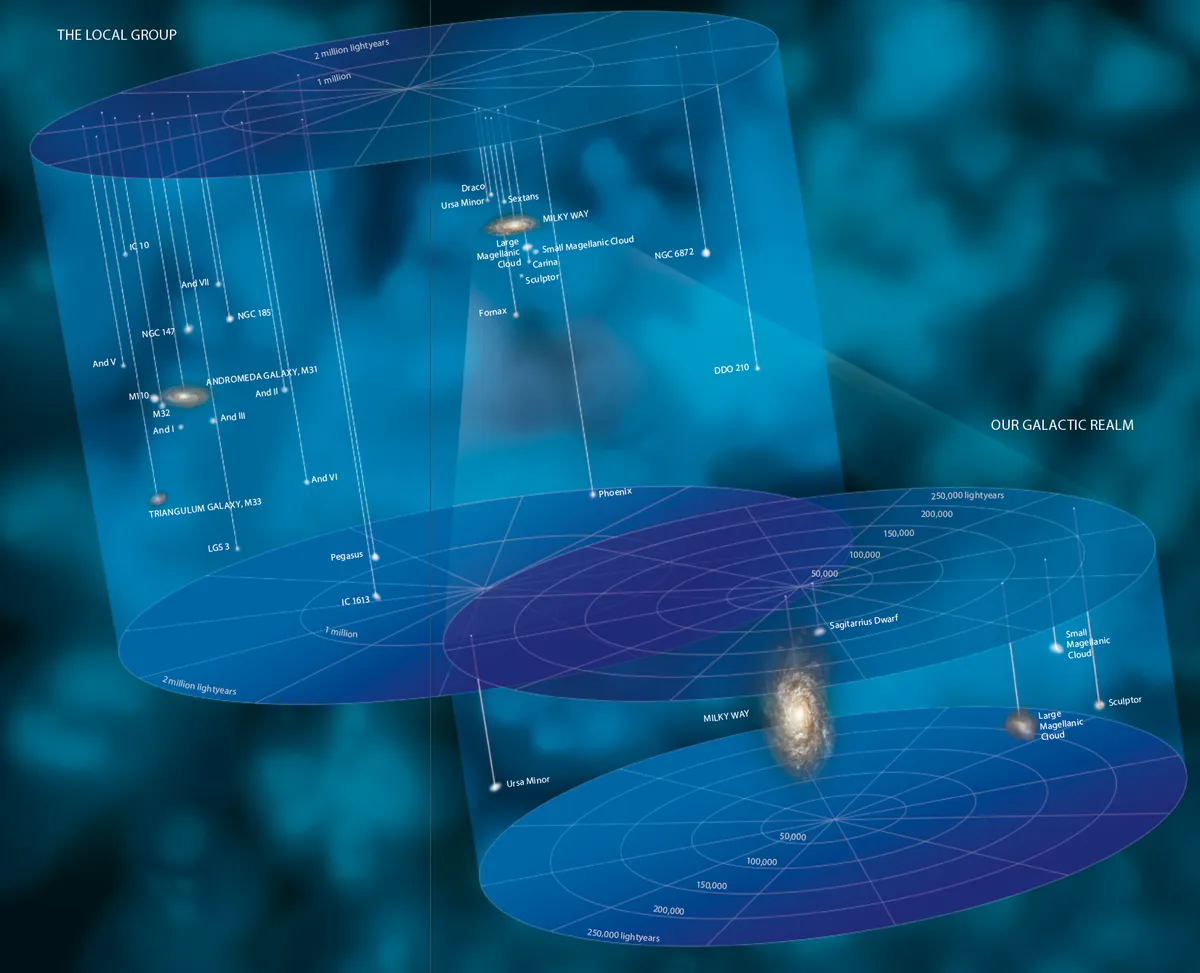
The Milky Way and the Andromeda Galaxy are gravitationally bound to one another. In fact, they are due to collide in the distant future in an event known as the Andromeda-Milky Way collision.
But they are not alone. Caught up along with our home galaxy and its neighbour are about 30-50 smaller galaxies including the Triangulum Galaxy and the Magellanic Clouds.
This group of gravitationally-tied galaxies is known as the Local Group.
The term ‘Local Group’ was conceived by the famous astronomer Edwin Hubble in 1936 as part of his study into distant cosmic objects. His work would eventually settle astronomy's Great Debate as to whether there were distant galaxies beyond our own.
Over the years more nearby dwarf galaxies have been found, increasing the number in the Local Group to potentially several dozen.
Virgo Supercluster
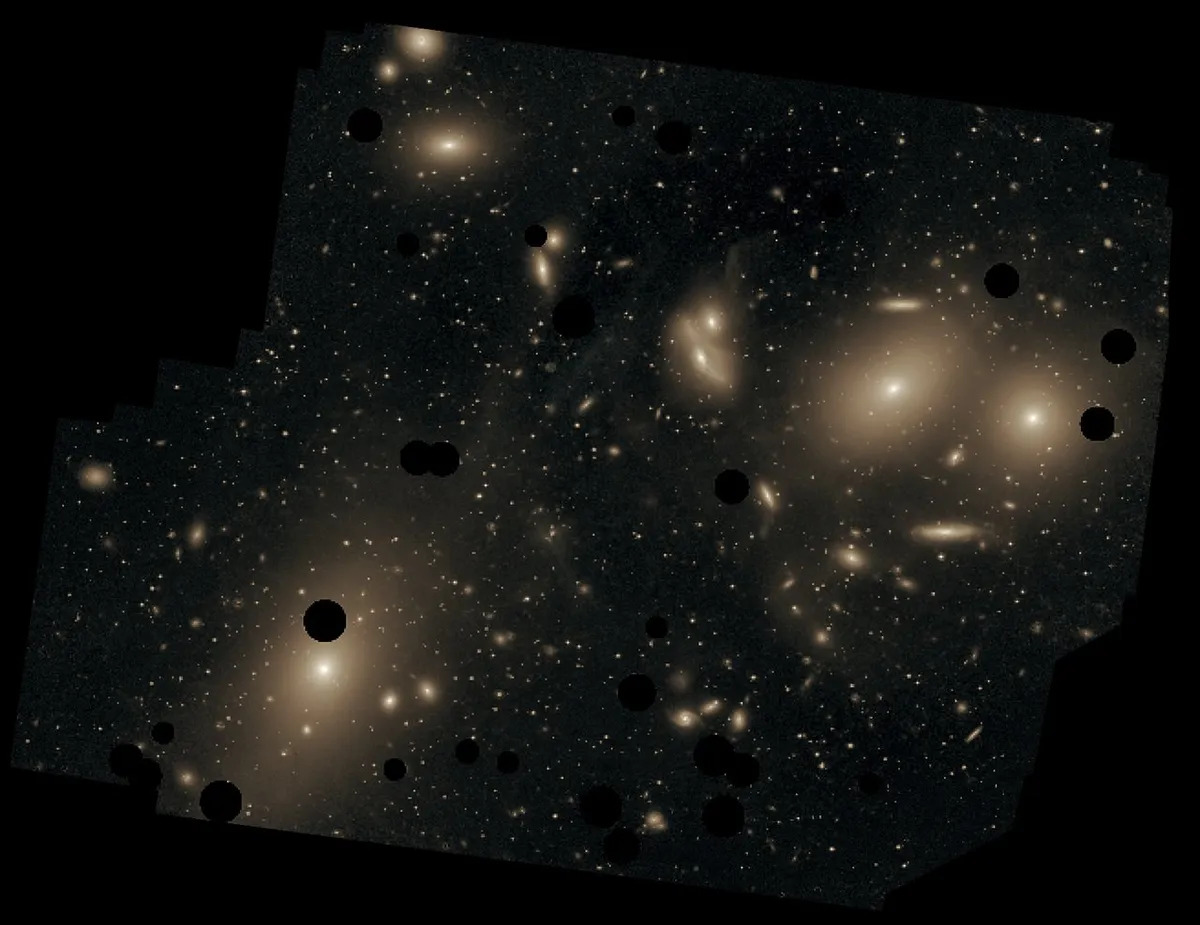
Our Local Group and the 'nearby' Virgo Cluster of galaxies are both located within the boundary of the Virgo Supercluster, or Local Supercluster, an enormous collection of galaxies, galaxy groups and galaxy clusters thought to stretch 110 million lightyears across.
Laniakea Supercluster
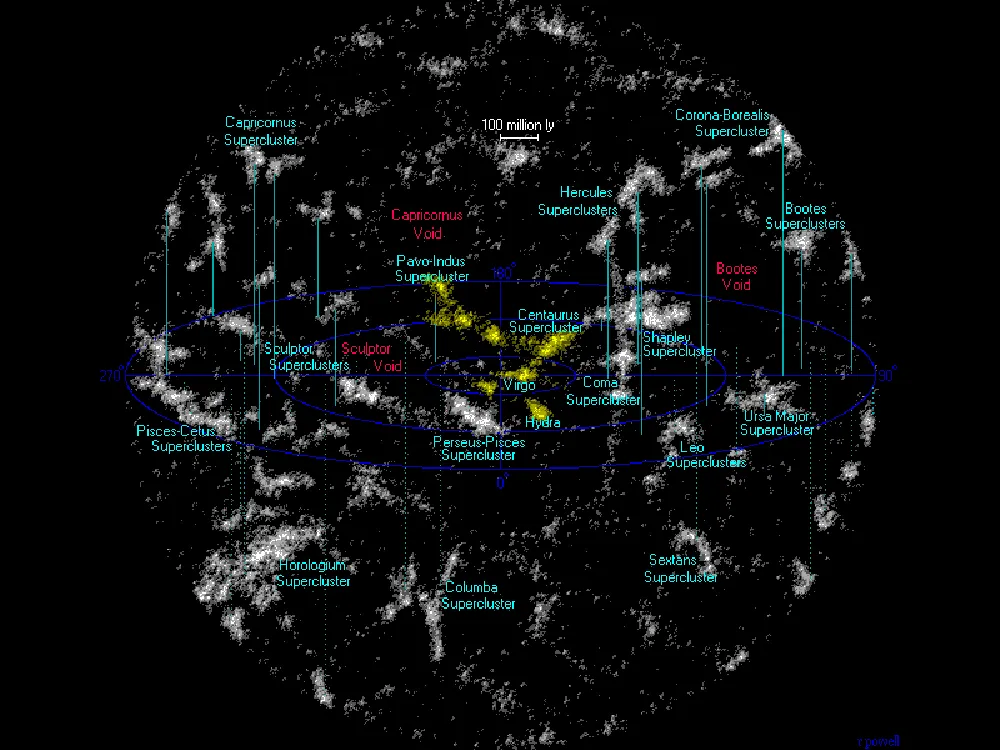
Laniakea is a Hawaiian word meaning 'immeasurable heaven', which is a fitting name for the Laniakea Supercluster, a relatively recently-defined region containing the mass of 100 million billion Suns and stretching 520 million lightyears across (more on this study via nature.com)
The Universe
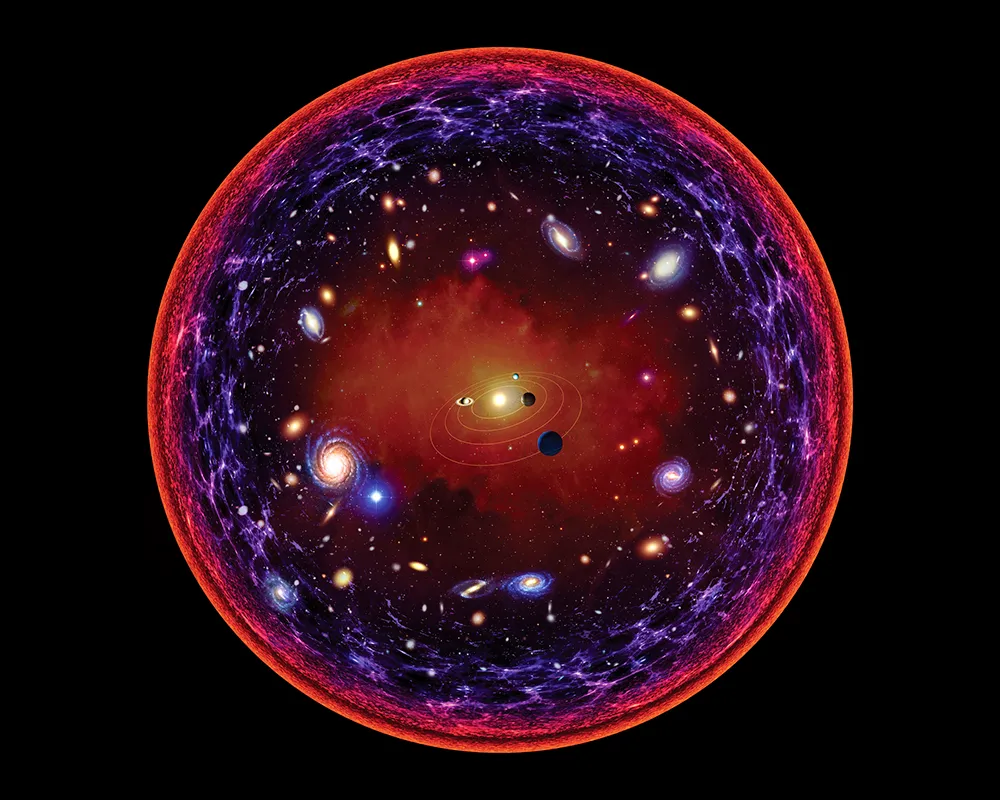
What is the Universe? It's a tricky question to answer, except to say that it's everything.
It's our home planet, our host star, our Solar System, our Galaxy, our galaxy cluster, our supercluster and all the other planets, stars, galaxies, galaxy clusters and superclusters that exist or have existed everywhere.
Is the Universe infinite? Does it have a beginning and an end, either temporally or spatially?
These are the questions that have plagued humanity since we we capable of thinking at such a profound level.
What we can say with a degree of certainty, however, is that all the matter that we can observe in the Universe - the aforementioned stars, planets and galaxies - makes up just a tiny fraction of its total mass.
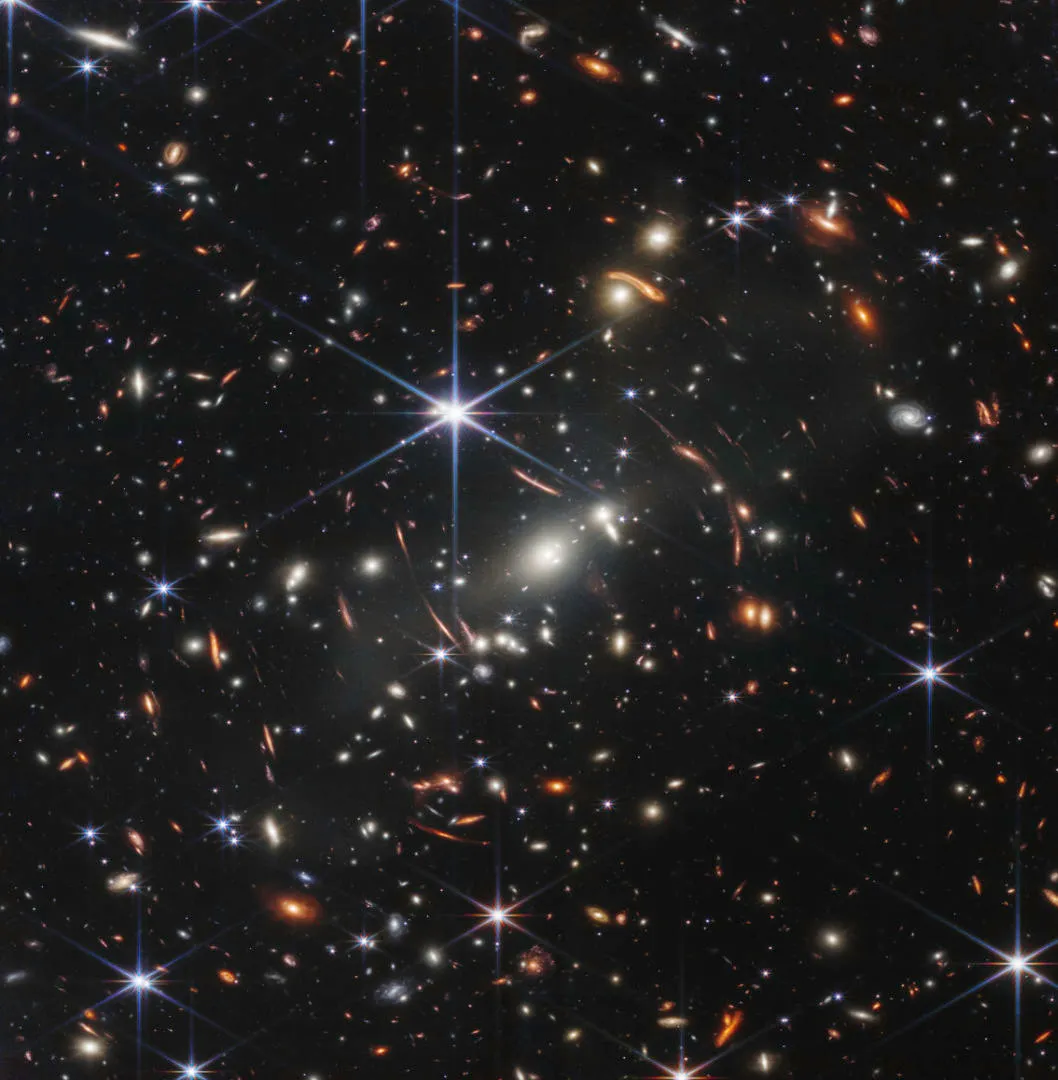
The matter that we can actually observe makes up just 4.9% of all known matter in the Universe.
26.8% is dark matter, which we can indirectly detect but not directly observe, and 68.3% is dark energy, a mysterious force causing the expansion of the Universe to accelerate.
The Universe is the last point in our cosmic address, and it is the job of astronomers and cosmologists to work out exactly what the Universe was, what it is, what it will be and how Earth fits into the bigger picture.
For more cosmic conundrums, read our pick of the biggest questions about the Universe.
